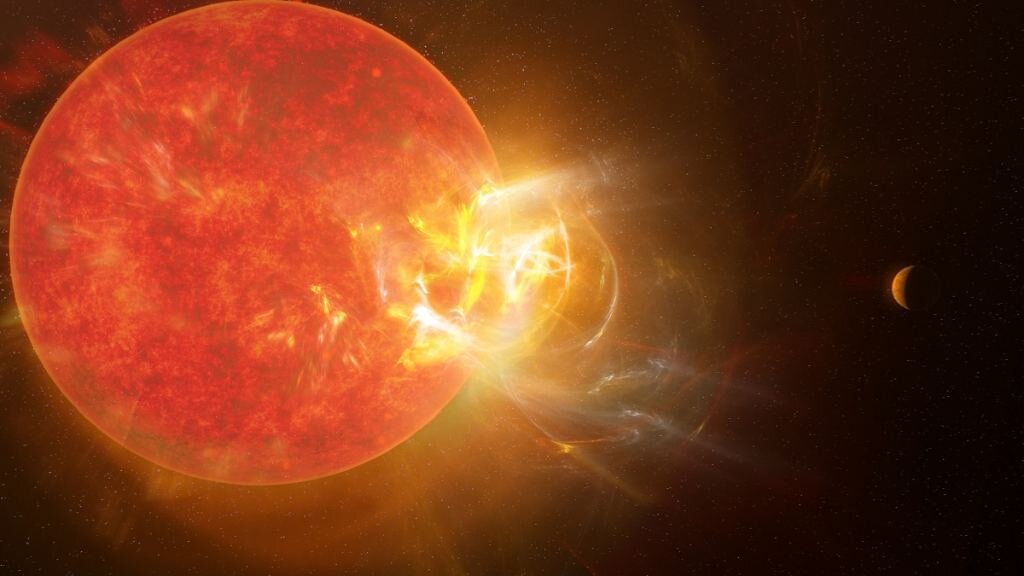Scientists analyzed the observation of 177 red dwarfs, conducted from 2003 to 2020. They come to the conclusion that even the calmest of them show much higher activity than the Sun.

Red Dwarf Research
A group of scientists recently published an article on the study of the activity of red dwarfs. These small stars are very common in space around the Solar System. Scientists are interested in how often they have flares similar to those that occur on the Sun and cause magnetic storms.
The study was based on the observation of 177 red dwarfs carried out by the High Accuracy Radial Speed Planet Searcher (HARPS) instrument, carried out from 2003 to 2020. In essence, this device is a spectrograph capable of tracking changes in the state of the chromosphere of stars. It is in it that complex magnetic phenomena are observed, one of the consequences of which are flares.
Even for our Sun, which studies several Parker Solar Probe, Solar Orbiter and Heliospheric Orbiter devices at once, we cannot confidently predict all the processes that may occur during an 11-year cycle. All we know about other stars is that they can have such cycles.
Extremely active stars
The authors of the study note that the observation period of such a study is rather short, since red dwarfs may have a periodicity with a period of tens of years. However, they still managed to draw some conclusions. First of all, the duration of electromagnetic activity cycles similar to the solar one was estimated.
It turned out that they last from several to 20 years. During this period, the stars undergo minimums and maximums of activity. However, it was not possible to fully trace the red dwarfs during this period. Instead, the scientists observed each of them for 40 and 150 days.
However, this was enough to understand that even the calmest red dwarfs are much more active than the Sun. Flares on them are both more frequent and more powerful than on the Sun. However, most of them are still not catastrophic.
The most important thing that causes concern among scientists is probably the presence of additional, much longer cycles, during which truly catastrophic events occur, when the amount of radiated energy increases tens of thousands of times.
Why are red dwarfs so interesting to scientists
The main reason why red dwarfs are so interesting to scientists is their abundance. They make up most of the stars in the Milky Way. In addition, the time of their existence is measured in hundreds of billions of years. It is not surprising that most potentially habitable planets should be searched for near these small luminaries.
But there are also factors that call into question the suitability of such luminaries for life. And the main one is extremely powerful flares, which are commonplace on 2/3 of all red dwarfs. Radiation at these moments increases thousands of times, and planets in the habitable zone are usually much closer to the star than Mercury.
Therefore, the question of whether most of the Earth-like planets in the Universe are located near Red Dwarfs, or all of them are really dead — is one of the most urgent in astronomy. In particular, it concerns the exoplanet closest to us, which orbits Proxima Centauri.
According to phys.org
Follow us on Twitter to get the most interesting space news in time
https://twitter.com/ust_magazine
